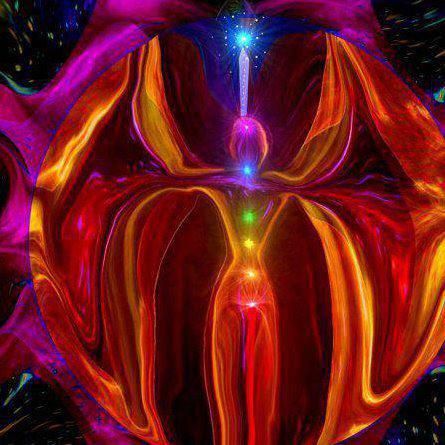Root Chakra (Part 1)
After understanding the concepts of Aura, Kundalini, Nadi and Chakra so far, it is now the time to plunge deep into each chakra to understand all pertinent aspects in threadbare, and also to know multiple chakra balancing modalities that one can implement with ease.
Root Chakra
Any kind of penance is a pilgrimage of 7 Chakras, whether performed consciously or unconsciously. Apart from that, the whole life from birth to death revolves around seven chakras. Therefore, we shall now embark upon the Chakra pilgrimage, gradually climbing the 7 Chakra ladder, the first step being the Root Chakra, the reason being its location at the base of the entire seven chakra structure.
Alternate names, location in body, colour, element, mantra
The Root Chakra is the first chakra from the bottom, also known as the Base Chakra or the Muladhar Chakra. Muladhar is a Sanskrit language term, composed of two words i.e. Mul + Aadhar; Mul translates to Base while Aadhar denotes support. So, the Root Chakra is the chakra which provides support to the root. The point known as the perineum where the two legs join each other, i.e. the point between the anus and the genitals, is the precise location of this Chakra.
Each chakra has a colour and a mantra. The Root/Base chakra’s colour is red, analogous to the blood which is the fundamental element in our body. The mantra for this chakra is ‘LAM’.
Out of the five primary elements (Earth, Water, Fire, Wind and Ether), the Earth is the element for the Root Chakra. Like the physical body deriving support and stability from the Earth, the auric body gets stability and grounding from the Earth element. Each solid organ in the body represents the Earth element.
Root Chakra of the Earth
As learned in an earlier article, the Earth also has Chakras, similar to the human body. The Earth’s Root Chakra is Mt. Shasta, situated 13,000 feet above sea level in Northern California, USA. This mountain is a dormant volcano which carries with it an aura of mysticism and spirituality for a long time. That is the precise reason that Native American races and many other spiritual groups consider it a sacred, healing mountain.
Significance of Root Chakra

This chakra serves as the foundation for both the physical and the subtle body, and the power of Kundalini originates from here. Furthermore, The Nadis(subtle energy channels) that we discussed in earlier articles, originate from here.
The existence and sustainability of any strong structure are possible only on a robust and stable foundation. Therefore, it is essential that the Root Chakra remains balanced and absorbs the optimum quantum of energy from the cosmos. In view of the criticality of this Chakra, there is a crucial process called Rootlock (MulBandh) In Hatha Yoga; where the Rootlock practitioner pulls the muscles of this part (perineum) upward to give a push to energy and to strengthen the organs associated with this Chakra.
As every physical (including monetary) matter relates to the Root Chakra, the condition of this Chakra will determine one’s physical condition. Furthermore, this Chakra provides energy to the bone marrow, and the formation and quality of blood depend on this Chakra, all the elementary requirements i.e., a feeling of security, feeling of mental and social support etc., are related to this Chakra.
While the Root Chakra’s position is at the bottommost point in the seven-chakra structure, it holds a straight connection to the chakra situated at the top, i.e. the Crown Chakra. Consequently, if one of these two chakras is imbalanced, the other is bound to have an imbalance as both these Chakras conjointly balance the hormones in the body.
Related Body Organs and Endocrinal Glands
The Root Chakra bears a linkage with the ovaries in women and the testicles in men, bones, teeth, nails, prostate, large intestine, legs and anus. Furthermore, it controls the Gonads (sex glands) and the Adrenal Gland (the adrenal has a connection with Solar Plexus, too) secretions. Hence, any ailments relating to these organs, represent Root Chakra imbalance.
When the Root Chakra carries so much significance, everyone must perform a self-examination, to find out whether one’s Root Chakra is balanced or imbalanced. So, we shall discuss, in the upcoming article, the self-examination technique and the physical as well as the psychological consequences of over-active or under-active Root Chakra, specific diseases manifesting because of imbalanced Root Chakra etc.; the time has come to take a break.
…continued in next issue
✍🏾 Jitendra Patwari ✍🏾
Jitendra Patwari’s Facebook Page 1of2
Jitendra Patwari’s Facebook page 2of2
jitpatwari@rediffmail.com
Cell: +91 7984581614
Find Jitendra Patwari on Facebook



